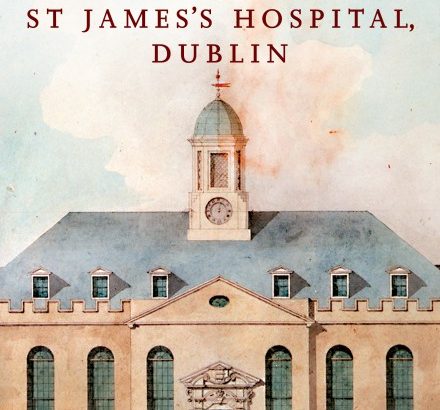The History and Heritage of St James’s Hospital Dublin
by Davis Coakley & Mary Coakley (Four Courts Press, €40.00)
These days the site at St James’s Hospital has become a controversial place due to the development scheme for the National Children’s hospital, which has in recent times been taking up so much space in the newspapers.
This, book, however is a backward look at the long and involved history of St James’s Hospital, the largest teaching hospital in Ireland.
Prof. Coakley and his wife have devoted themselves to researching, untangling and recreating the centuries of development that led to the emergence of that establishment.
They are both established writers, on cultural matters in Dublin and Cork. But this is an institutional history and aims to provide a history of St James’s, but also to explore and reveal the social and political nature of what went before.
It began in 1603 as a Foundling Hospital and Workhouse for Dublin. The notion of a workhouse now appalls us, but it reminds that social improvement cannot be obtained unless we know what went before.
The impact of the Great Famine on the city of Dublin is described, and this for many readers may well be quite unfamiliar as most of what is written about the “Great Hunger” is founded on rural Ireland.
The emergence of the present hospital in the mid 19th Century and the role of the Sisters of Mercy in its organisation are described. Here again reminding us that so much of the good that was done in the past was depended on voluntary work and contributions, and not on the often fickle support of the state – indeed the state then did not always see it as its duty to do anything,
Important
I have a friend who always described the South Dublin Union as ‘Kent’s Fort’, and indeed the role of this strategic bastion of buildings was important, not just in 1916, but later.
But with the coming of a new State the treatment for the sick poor reflected a change of emphasis from the mentality that created the workhouses.
The final chapters cover the developments of health treatment and hospitals over the last 70 years or so. These are important but of perhaps less interest to the general reader.
In the controversies of today we often fail to see how far we have come in the provision of care and welfare.
But there will also be some who will mourn the loss of the role of the nuns in this area.
The modern hospitals so often seem well provided with treatment, but nursing care can sometimes lack the human warmth that is so essential (as the Mercy Sisters knew) to the healing process, or sustaining people in their last days.


 Peter Costello
Peter Costello The History and Heritage of St James’s Hospital Dublin
The History and Heritage of St James’s Hospital Dublin